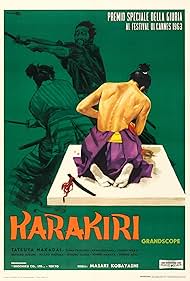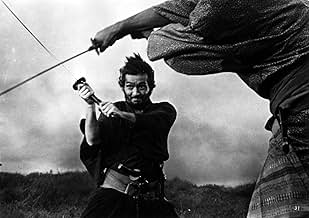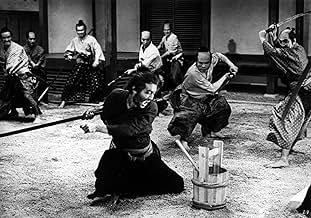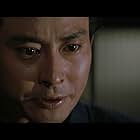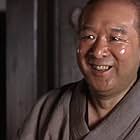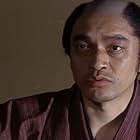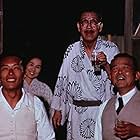Quando un ronin richiede seppuku nel palazzo di un signore feudale viene informato del brutale suicidio di un altro ronin che in precedenza ha visitato, rivela come i loro passati si intrecc... Leggi tuttoQuando un ronin richiede seppuku nel palazzo di un signore feudale viene informato del brutale suicidio di un altro ronin che in precedenza ha visitato, rivela come i loro passati si intrecciano - e nel farlo sfida l'integrità del clan.Quando un ronin richiede seppuku nel palazzo di un signore feudale viene informato del brutale suicidio di un altro ronin che in precedenza ha visitato, rivela come i loro passati si intrecciano - e nel farlo sfida l'integrità del clan.
- Premi
- 9 vittorie e 3 candidature
Trama
Lo sapevi?
- QuizWhile filming, Tatsuya Nakadai was afraid during most of the sword and spear fighting scenes because real swords were being used, a practice now forbidden in Japanese films. His concern was not alleviated even though professional swordsmen were employed during the choreographed swordplay.
- BlooperAfter Motome's seppuku, when Omodaka steps forward and chops Motome's head off (supposedly), he visibly stops his swing before striking Motome's neck (naturally, since real swords were used).
- Citazioni
Hanshiro Tsugumo: What befalls others today, may be your own fate tomorrow.
- ConnessioniFeatured in Dédé, à travers les brumes (2009)
The film begins deceptively as a story within a story, seemingly providing a traditional example of upholding samurai honor, such as in the conventional, oft-retold tale of "The 47 Ronin." The context is set at a time when the central government, the shogunate, is supplanting local clans and arbitrarily unemploying thousands of people, notably their samurai, forcing them into the mercenary mode of ronin at best and begging for food at worse. But the parallels to the 20th century are made repeatedly explicit as the samurai who comes to this clan seeking help is from Hiroshima.
Very gradually we get further insight on the tale within a tale, as we see more flashbacks within flashbacks into what each character has been doing before these confrontations and we get uneasy inklings that the moral of the story may not be what it appears at first and the stakes get higher and higher with almost unbearable tension.
It is almost halfway through the film until we see a female and we suddenly see an alternative model of masculinity, where a priority is put on family, support, education and creative productivity. In comparison to the macho opening relationships, with their emphasis on formal militaristic loyalty to a hierarchy, a loving husband and father is practically a metrosexual. Seeing the same stalwart samurai making casual goo goo sounds to his grandbaby puts the earlier, ritualized scenes in sharp relief, particularly the recurring image of the clan's armor which seems less and less imposing and is finally destroyed as an empty symbol.
The psychological tension in the confrontations in the last third of the film is more excruciating than the actual violence. Even when we thought we already knew the outcome from the flashbacks, the layers of perception of relationships and personalities are agonizingly peeled away with each thrust of a sword to reveal the depths of the horrifying hypocrisy of the political and social structure. And those are just the overwhelming cultural resonances that a 21st century American can glean. Like "Downfall (Der Untergang)," it reveals the inhumane mentality that led to World War II.
The repeating motif of long walks then confrontations down empty corridors emphasizes the stultifying bureaucratic maze that entraps the characters. The revenge motifs are accented by startlingly beautiful cinematography that recalls traditional Japanese art, including drops of blood like first snow flakes then a waterfall.
The over all effect of this masterpiece is emotionally draining.
I più visti
- How long is Harakiri?Powered by Alexa
Dettagli
Botteghino
- Lordo in tutto il mondo
- 15.222 USD
- Tempo di esecuzione2 ore 13 minuti
- Colore
- Mix di suoni
- Proporzioni
- 2.35 : 1
Contribuisci a questa pagina

